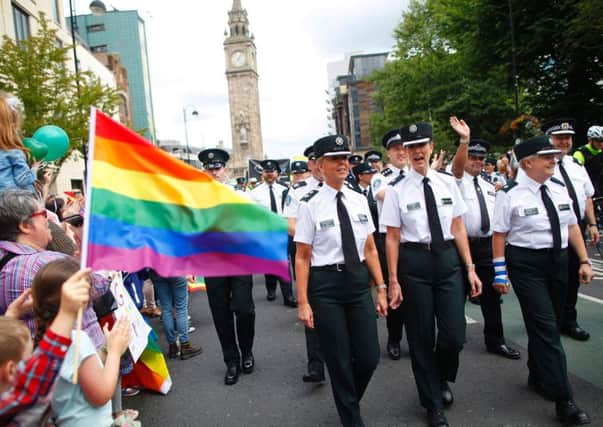Police neutral on gay marriage: George Hamilton


George Hamilton acknowledged that the sight of officers participating in Saturday’s event had caused “offence in some quarters”.
But he said the police’s desire to “connect” with the LGBT community - to encourage both the reporting of hate crime and new recruits from that sector of society - had outweighed any anticipated negative reaction.
Advertisement
Hide AdAdvertisement
Hide AdWhile the presence of uniformed PSNI officers and Irish gardai in the Pride parade was warmly welcomed by many, some critics of the move have questioned whether it undermined the police’s stated neutrality in the region.
Belfast Pride actively promotes the campaign to introduce same-sex marriage in Northern Ireland - the only part of the UK and Ireland where it remains outlawed.
Mr Hamilton said the PSNI was steering clear of that political debate.
“We are neutral on the political issue of equal marriage, that’s not a position that the police are going to take ether way on that,” he said.
Advertisement
Hide AdAdvertisement
Hide Ad“But we did feel it was important to make a connection with that community.”
The chief constable said he knew the issue was “controversial”.
“I understand that has caused offence in some quarters,” he said.
“This is a judgement we had to make. People will make their own judgement on the rights and wrongs of that.”
Advertisement
Hide AdAdvertisement
Hide AdHe added: “We want to show support for that marginalised community who under-report hate crime to us, we think that was appreciated by that community, but we may have caused offence in other places, and policing is balancing act - it’s not an easy decision to come to.
“That’s our rationale for being involved. It’s certainly not anywhere near the political space of the debate about demanding change for equal marriage - this was us reaching out and showing a connection with a community that has historically lacked confidence in the ability of the police to take them, as victims, seriously, and therefore deal with the under-reporting issue and the under-representation of people from that community in the police service.”
ends